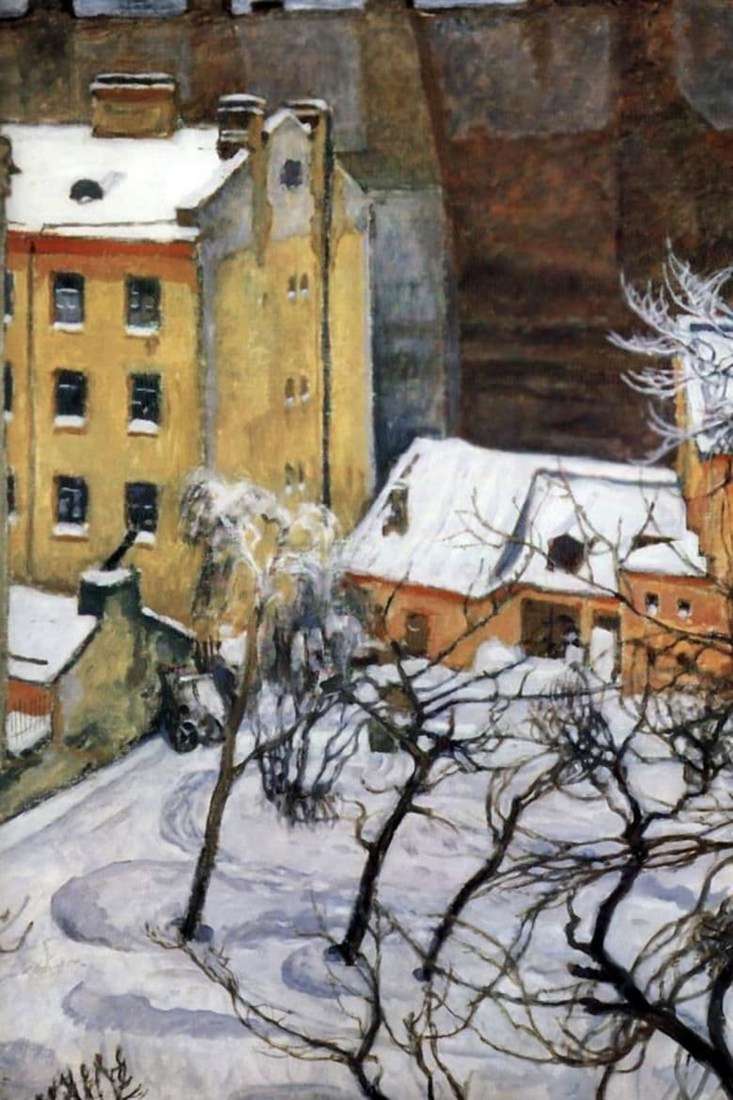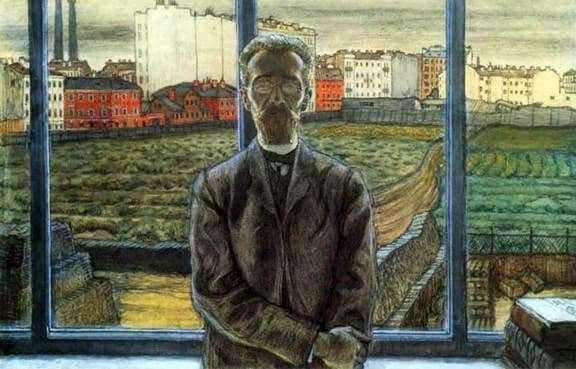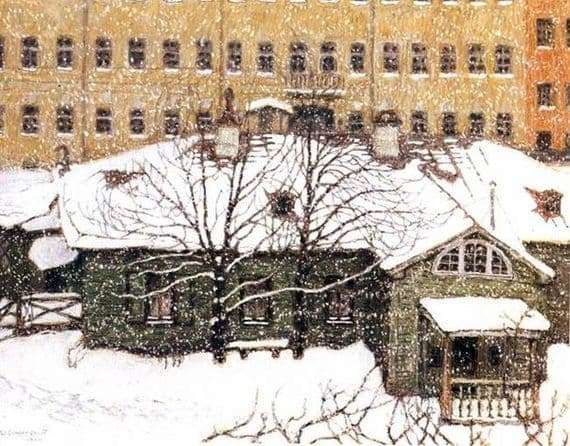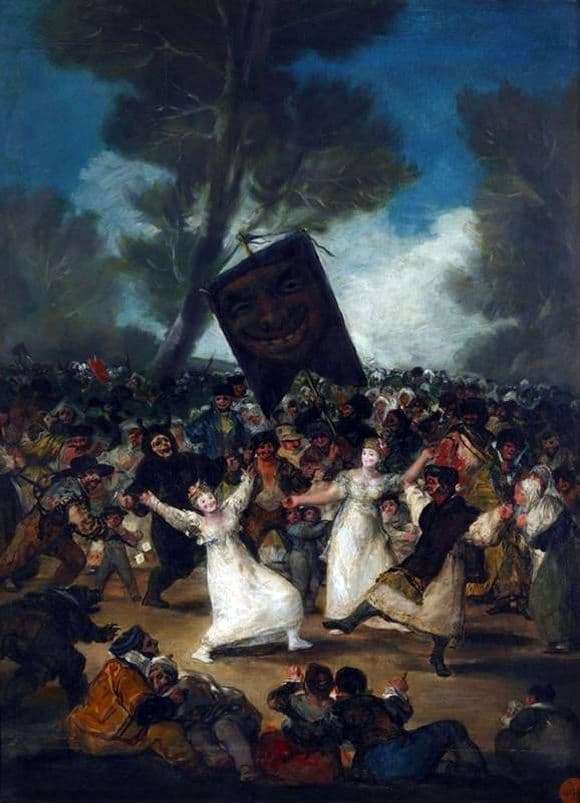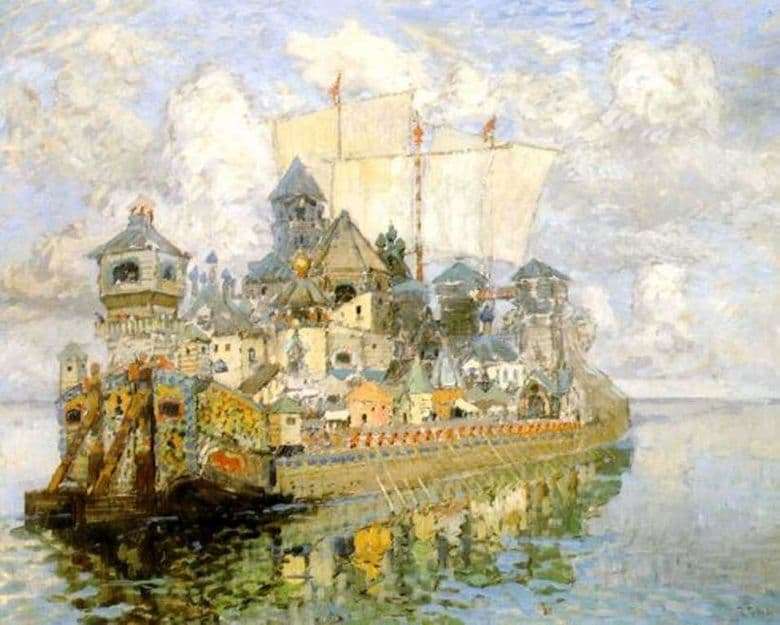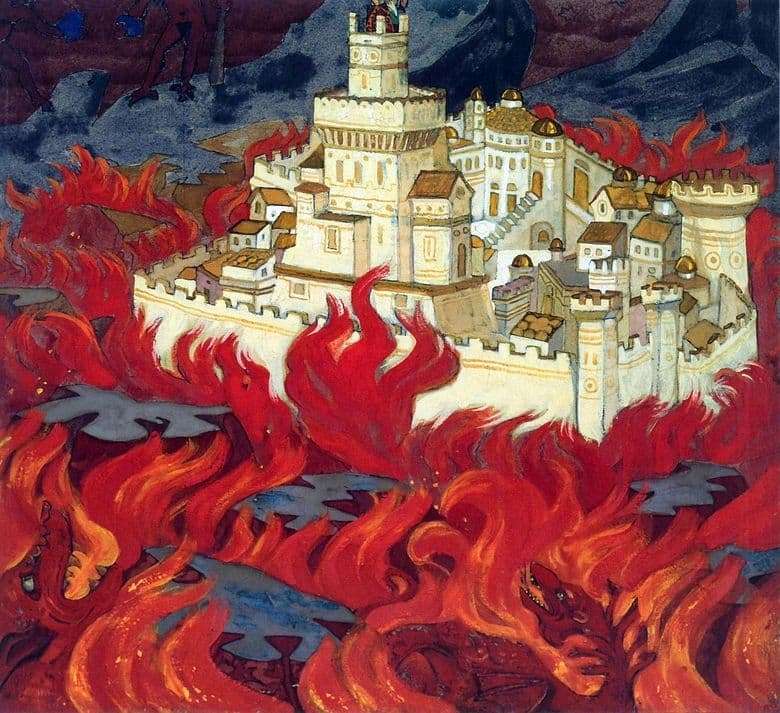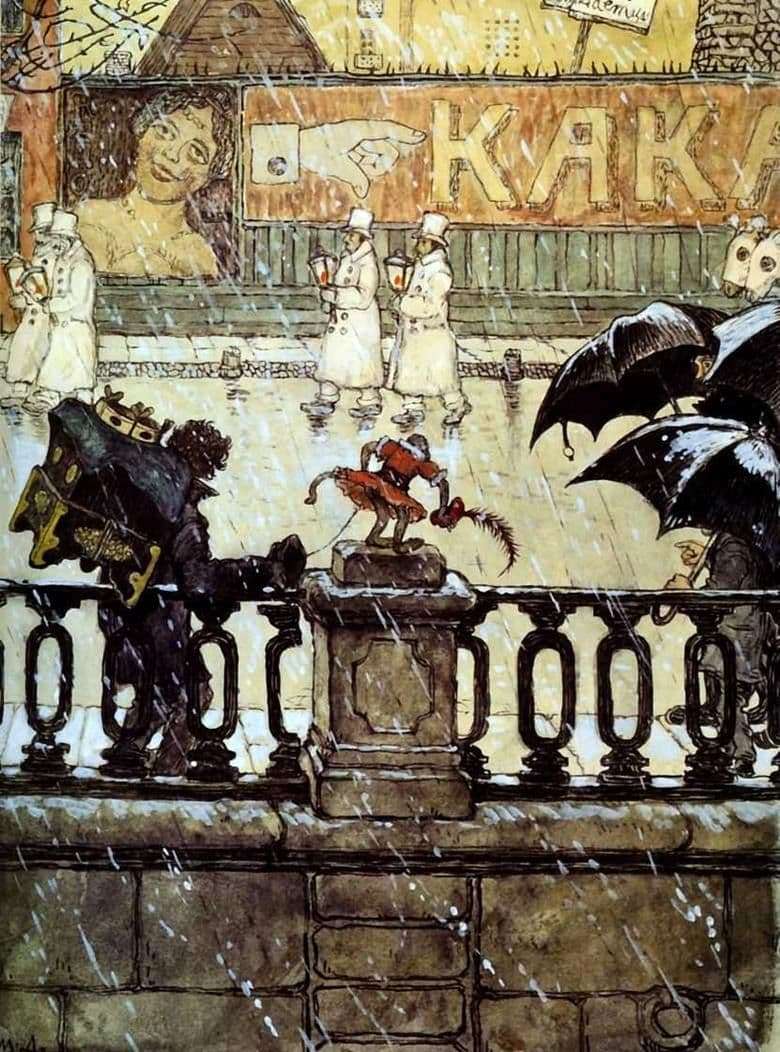
Dobuzhinsky – master graphics cityscapes. He loved to draw the streets of St. Petersburg and life boiling and boiling on it. He was more interested not in architectural beauty, but in what is happening around. Mstislav Valeryanovich believed that in the world of life there is a mystery, a mystic. He drew attention to the “grimaces and curiosities” on the streets, in parks, in museums. It can be attributed to the adherents of symbolism. The city, which depicts the artist, as a single organism, filled with paradoxical reality.
The painting “City Grimaces” was painted in watercolor in gouache on paper in 1908. The painting depicts a rich funeral procession marching down the street of St. Petersburg. They are headed by torch-bearers dressed in white clothes, carrying lanterns in their hands.
Dobuzhinsky portrays the action taking place, the rhythm of the plot is amazingly accurate. The artist with irony, with the help of color contrasts, conveys the whole essence of paradoxical life – a mournful and rich ceremony and bright, frivolous city life, the curiosity of passersby, a poor organ-grinder.
The action takes place in the pouring rain, on one of the streets of St. Petersburg. The procession runs along the fence, on which an advertisement with a picture of a smiling, brightly made-up lady with a deep neckline is pasted. This poster looks vulgar and tasteless. On the other side of the procession, a poor organ-grinder is depicted who, in solidarity, took off his head-dress with its monkey. Next to the organ-grinder is a crowd of “onlookers” who watch what is happening. One of the observers, discussing what is happening, points his finger at the funeral procession. This gesture of the stranger ironically coincides with the advertising gesture. The artist in this way conveys the cynicism of society in the picture.
Description of the painting by Mstislav Dobuzhinsky “City grimaces” (1908)
